
- Programs & Services
- Learning & Development
- Health & Wellness
- Faith & Traditions
- Economic & Financial Planning
- Community Engagement
- Support Services
- News
- Upcoming Events
- Watch Now
- Opportunities
- the.ismaili
- Feedback
- Login
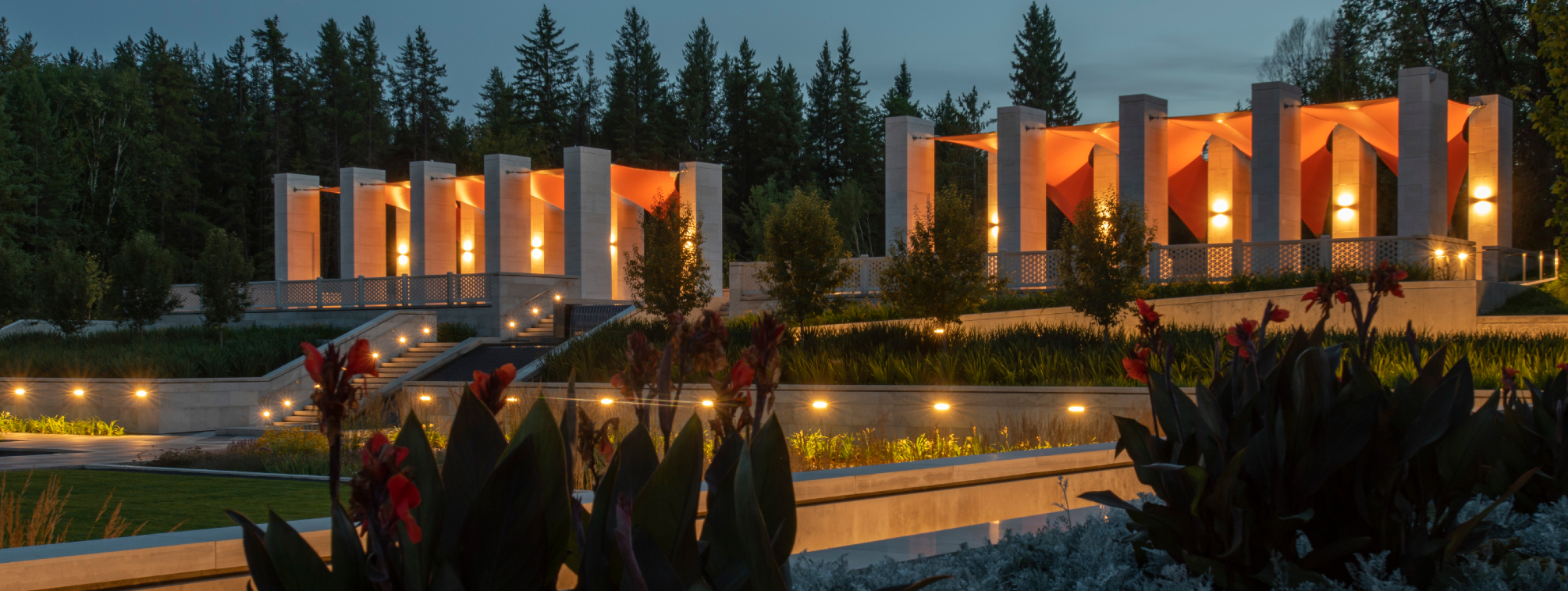
“If you look now, the geometric pattern clearly comes into view on the ground,” says the volunteer guide. Above, the sun moves from being a supporting character and beams through gaps in the clouds, illuminating the surrounding landscape. Suddenly, repeating patterns shimmer into existence: on the land where I stand, silver-lined stars interconnect with hexagons in an elegant geometric design, adding to the encompassing beauty of the Mughal-inspired Aga Khan Garden in Edmonton.
Rooted across time, geography and purpose, gardens in the Islamic context offer value, variety and vision. Gardens give us opportunities to connect with ourselves, others and Allah, while offering us vivid imagery of paradise. Several sacred texts shed light on the significance of and symbolism in nature. Genesis 2:15 alludes to the reciprocal benefit and interrelationship between people and plants, stating, “[t]he Lord God took the man and put him in the garden of Eden to work it and take care of it.”
The diversity of nature is also detailed in the Qur’an 6:99: “[We produce] gardens of grapevines and olives and pomegranates, similar yet varied. Look at [each of] its fruit when it yields and [at] its ripening. Indeed in that are signs for a people who believe.” Stemming from the spiritual, there is a nudge to nature not only for what it offers our senses, but also as a springboard to the sublime.

In Edmonton, the sky is overcast and looming with a deep shade of grey. The long oval pool near the entrance of the garden is simple and still. Its calm draws me to it and sets the cadence by calling my consciousness—this isn’t just a place to whisk through; there’s value in decelerating. From welcoming waterfalls to wide walkways, from facades that prompt people to pause to lowered lawns that invite people to take respite and unite, the thoughtful design stirs the spirit. I stare at the reflection of the world around me in the water. Its clarity seems effortless.
Over generations, Islamic gardens have provided much-needed reprieve from hot and humid conditions in the Middle East, North Africa and Asia. The use of water as materia prima (the foundational element) of the landscape is highlighted in the Qur’an 31:30: “God preferred water over any other created thing and made it the basis of creation, as He said: ‘And we made every living thing of water.’” It’s no wonder why we gravitate to the sights and sounds of a fountain, how we sit at its edge, mesmerized by the soaring streams that somersault into concentric circles, and how we let our fingers linger longer in the water, as it cools and awakens our senses.
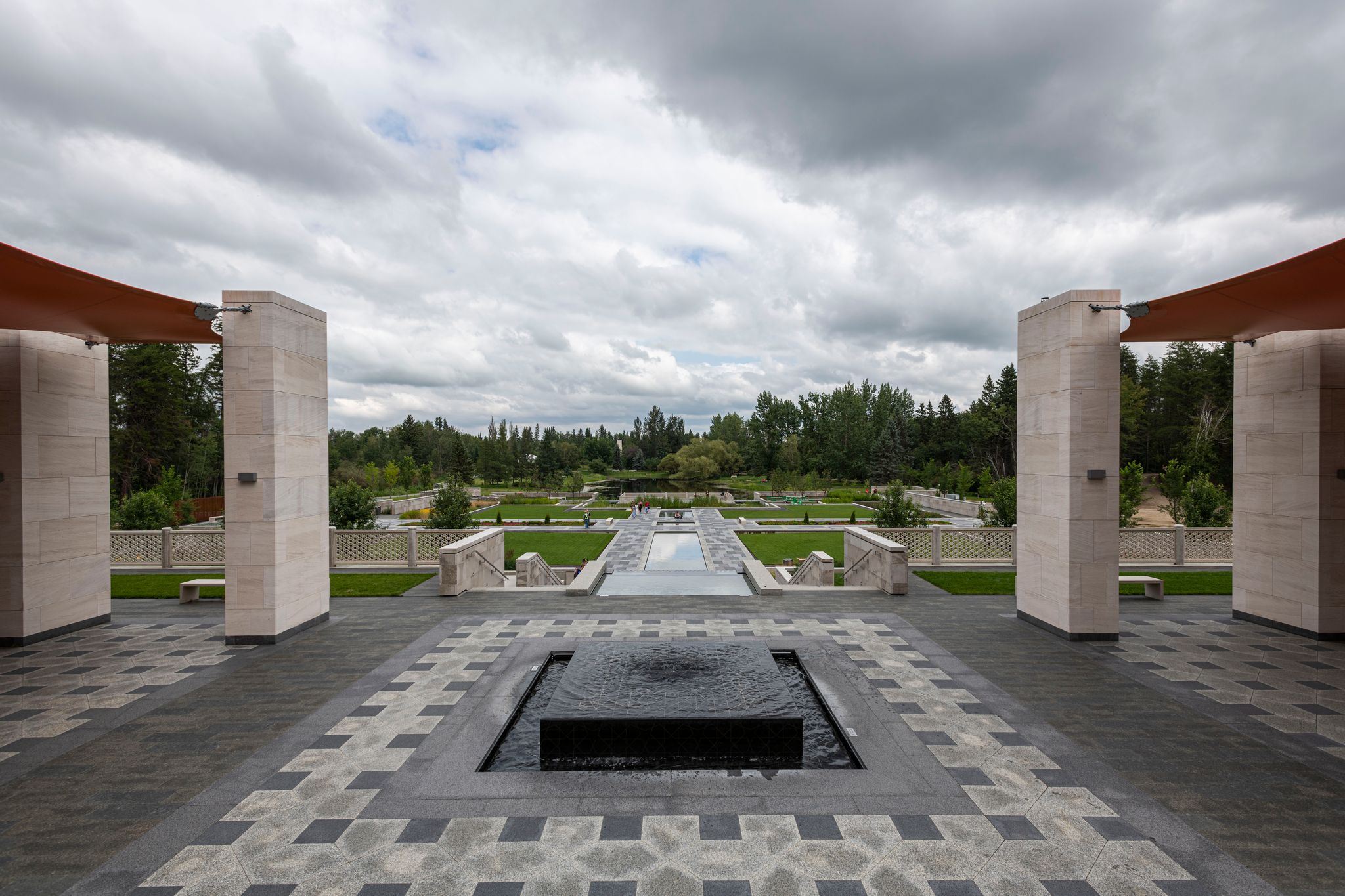
As a source of vitality for both people and our planet, gardens have generated great value across centuries and circumstances. From weddings and food festivals, to screening the Raptors’ playoff games, the Aga Khan Park in Toronto exemplifies how gardens can add value to our lives. More than 10,000 kilometres away, the Baghe Babur, a 16th-century garden in Kabul, Afghanistan that was rehabilitated by the Aga Khan Trust for Culture, provides premium greenery amongst rubble and ruin. Now a popular weekend destination, the park is a go-to place for locals, expats, family gatherings, art shows and concerts in an environment of unrest, where it acts as a haven for social connection.
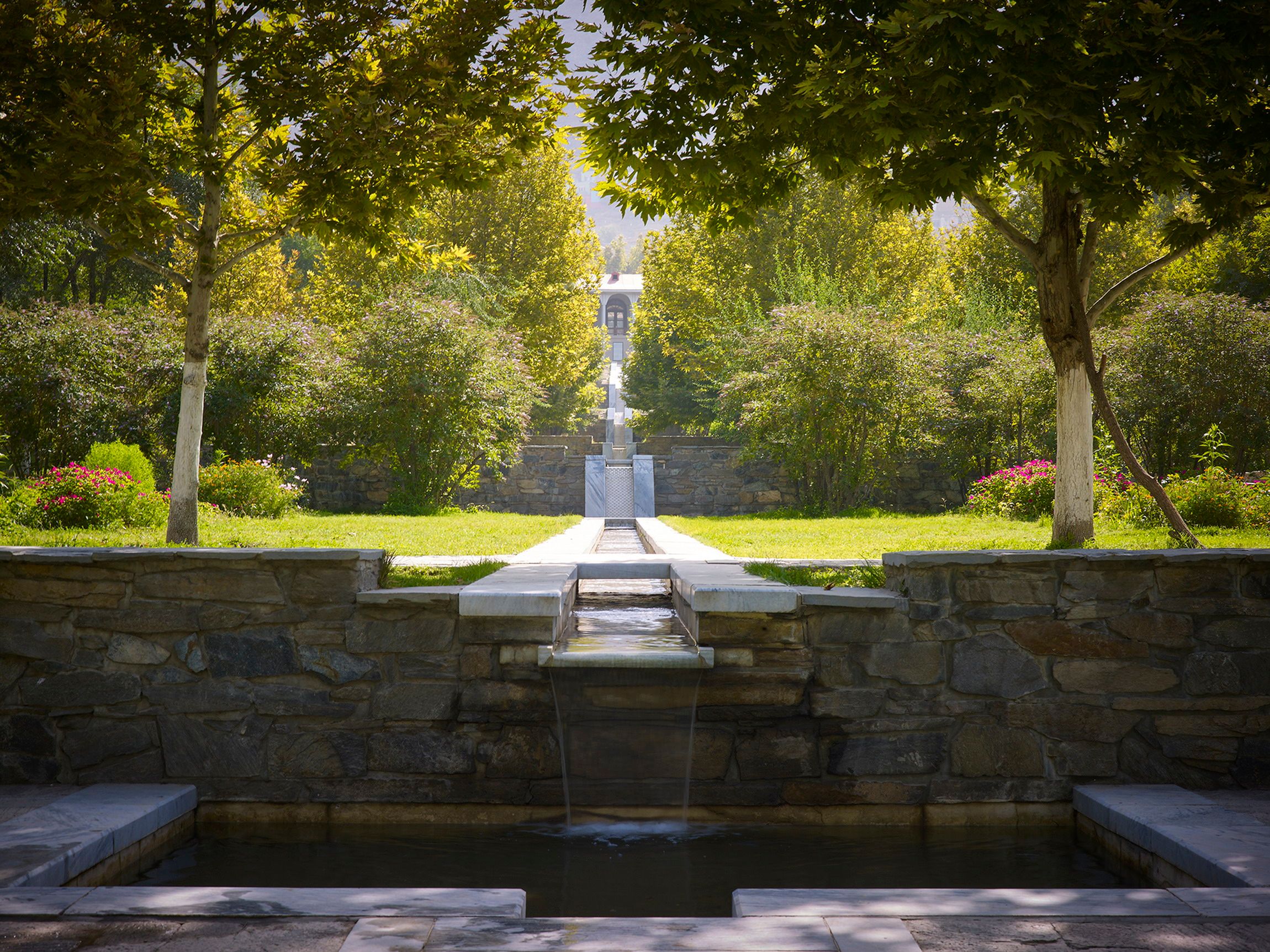
The wonder and worth of gardens go beyond beautiful blossoms and visual verve. Both the natural variety of gardens and diverse ways people use them lend them grace. To create interest and delight the senses, flower gardens often combine plants of various heights, textures, hues and fragrances. Even in less cooperative conditions, such marvels can be crafted. Consider the chahar bagh at the Delegation of the Ismaili Imamat in Ottawa. Sloping walkways divide four smaller gardens, while Japanese lilac trees line the quadrilateral layout. In lieu of flowing water, which would freeze during the winter, resilient trees are planted and arranged in an innovative design. As snow piles up on treetops, the undulating impression is reminiscent of waves of water—a wonder that wows regardless of the frosty feel.
Indeed, a garden’s contribution to diversity goes beyond subtypes of shrubs and seeds. For over two decades, the Aga Khan Trust for Culture has focused on improving quality of life in ten cities ranging from Bamako to Delhi by rehabilitating existing parks and creating new green spaces. These international efforts have demonstrated that, done correctly, gardens can not only nurture social and cultural development, but also bolster local employment and economic activity. In Cairo, the Aga Khan Trust for Culture transformed a 500-year-old dumping ground in the historic section of the city into Al-Azhar Park and excavated historical ruins hidden beneath the rubbish. The 30-hectare plot now acts as a “green lung” for the city. The project has also revitalized the low-income area that surrounds it by providing employment opportunities in horticulture and restoration, as well as through microcredit, job training and apprenticeship programs.
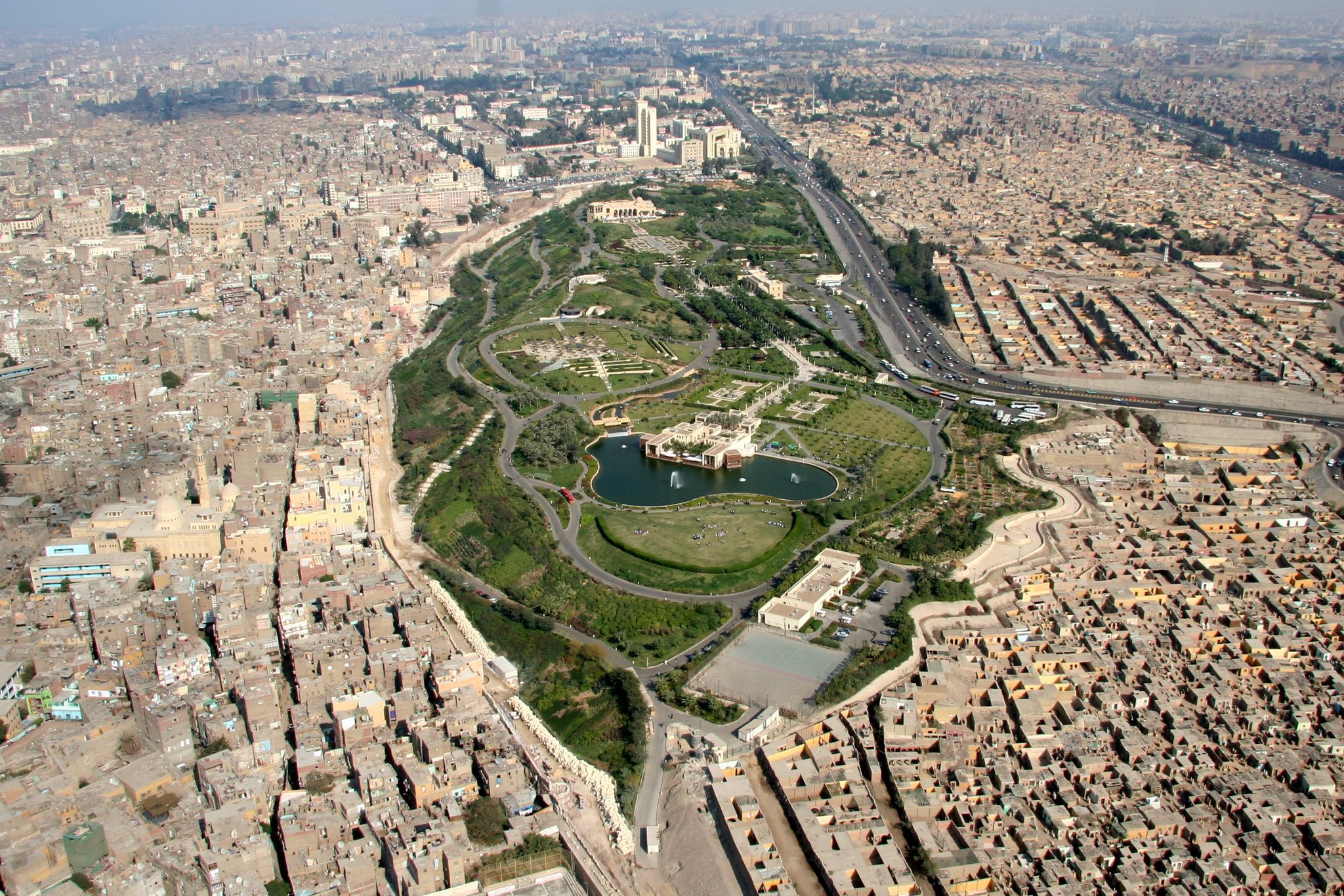
As such, gardens offer a space for budding aspirations—where we can advance skill sets, better activate pluralism, deepen social connections and reflect on our ideas. His Highness the Aga Khan said in a speech in Egypt in 2016, “What a wonderful, liberating thing it would be if more of us, more of the time, could see diversity not as a burden, but as a blessing; not as a threat, but as an opportunity.”
As I reflect on unity amid diversity at the Aga Khan Garden in Edmonton, rain descends and tickles my face, quenching the thirst of purple plants, green shrubs and tall trees. Slowly, the sky shifts from rays to greys. The botany around me actualizes 31:10 in the Qur’an: “We sent down water from the clouds, then caused to grow therein [vegetation] of every noble kind.”
With the stages of plant life and the cycling of seasons, the journey of birth and rebirth in a garden is always on display. Green spaces shower us with opportunity for creativity, stewardship and soulful connection. Think of the wooing power of a butterfly sitting on the edge of a bright orange bloom or a ladybug that meanders across a mighty green leaf. Be it the designer, poet or the professional photographer who constantly tweaks technique, the millennial or the grandma who whips out a smartphone—all strive to capture the vision in their mind’s eye.
This, however, is a “fragile beauty.” Coined as the title of his exhibition inaugurated in Kenya in 2019, Prince Hussain Aga Khan’s photographs highlight the beauty, diversity and fragility of marine ecosystems. Climate change has dire consequences for marine life. Some of the implications of warming waters include: impacting cues for successful breeding for several species, skewing sex ratios for marine turtles, and impacting requisite oxygen levels for crab, lobster, shellfish, squid and coral life—all of which have downstream effects. Through advocacy and art, such exposition begs a critical question: how do we preserve our natural assets?
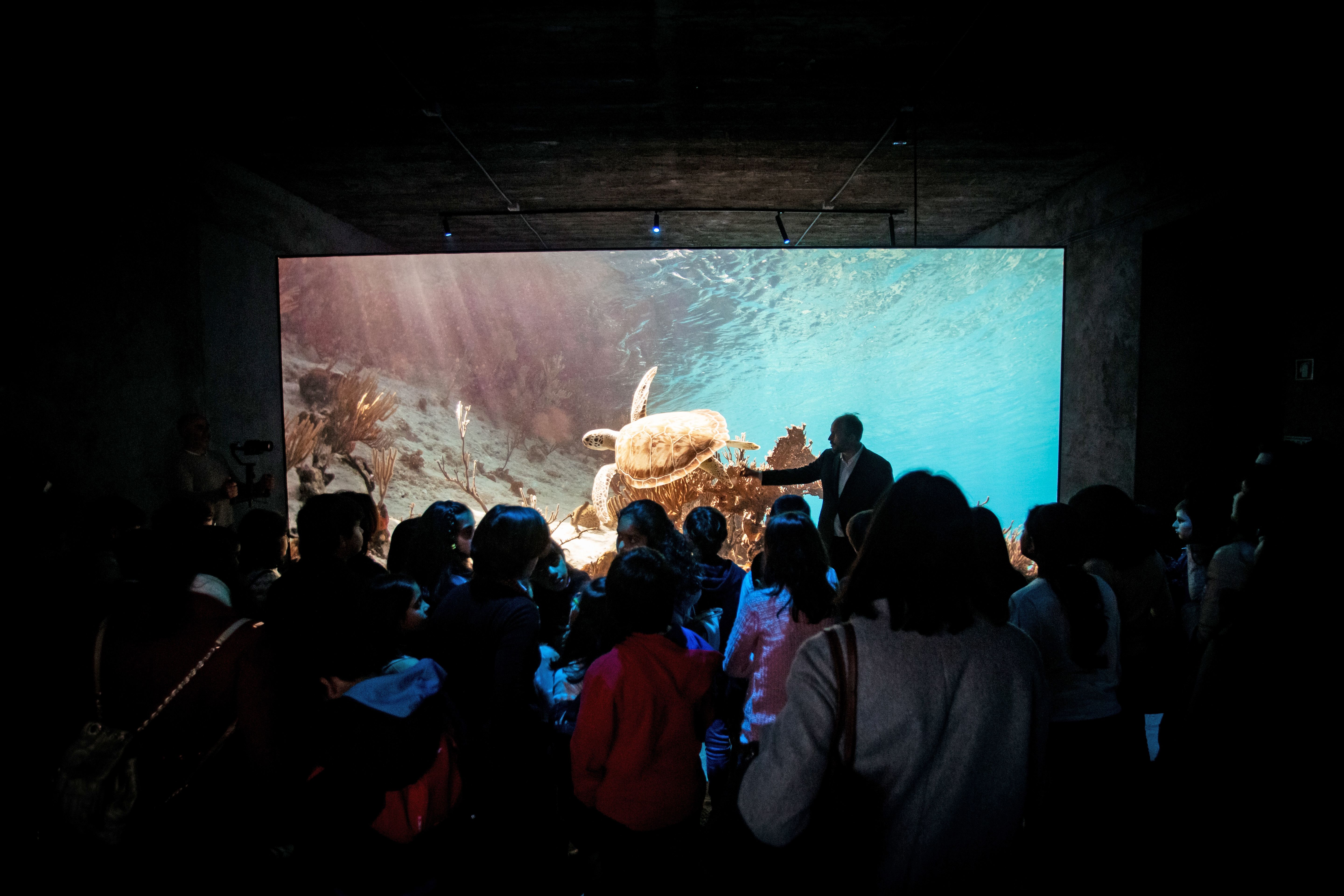
As roommates with the planet, perhaps the next time we find ourselves in nature, we can consider our active role in responsible use, protection via conservation and sustainable practices. Through composting, using reusable cups, making conscious food choices or planting trees, let’s take another step in safeguarding the place we all call home. After all, how many of our days can we pass living only in a concrete maze?
At the end of my visit to the Aga Khan Garden in Edmonton, the granite ground beneath my feet becomes dull as a curtain of clouds covers the sun. “If you look now, the view of the geometric pattern disappears,” says the volunteer guide, drawing my attention downward. I’m astonished! I can’t help but think of the esoteric, that which may not necessarily be in view, but like the silver-lined stars, definitely exists.
By inspiring us to think of the existential and eternal, gardens grace us with value, variety and vision. Hopefully, this gift is not only for the here, but also for the hereafter, as the Qur’an 9:72 says: “Allah has promised to the believing men and the believing women gardens, beneath which rivers flow, to abide in them, and goodly dwellings in gardens of perpetual abode; and best of all is Allah's goodly pleasure; that is the grand achievement.”
_
Dr. Ashnoor Nagji is a family physician who focuses on youth, vulnerable populations, delivering babies and teaching. Born in Tanzania, she has consulted, volunteered and traveled to 116 countries, including service with Doctors Without Borders (MSF) in refugee camps. She has also rendered Time and Knowledge Nazrana in Pakistan, Dubai, Tanzania and Afghanistan.
This article originally appeared in the Summer 2020 issue of The Ismaili Canada.